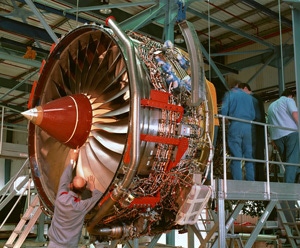January 10, 2011

Strongaircraft demand in coming years could outstrip suppliers' capabilities.
Boeing forecasts30,900 new airplanes over the next 20 years, valued at $3.6 trillion. Airbusprojects that almost 26,000 new passenger jetliners and freighters will beneeded-representing a market value of $3.2 trillion and an increase over thecompany's previous forecast by 900 aircrafts.
Growth isbeing propelled by demand in fast-rising economies in China and India as wellas replacement of fuel-draining aircrafts with efficient new planes such as theBoeing Dreamliner 787.
Metalsa euro (TM) Capacity Races to Meet Aircraft Demand |
TheDreamliner is already more than three years behind schedule in part because of fastenershortages and other supply chain problems.
The nextsupply chain issue could affect engines. Complex, highly efficientnext-generation engines consume large amounts of special metal alloys. Specialtyalloys made of titanium, nickel and other metals represent 95 percent of theweight of a jet engine.
The number ofjet engines required in 2013 is projected at 2,502,566 more than were requiredin 2010. That's a 23 percent surge for a metals' industry coming off arecession.
"Expectsupply chain challenges as aerospace customers increase capacity and rampproduction rates," Pat Hassey, CEO of Allegheny Technology Industries (ATI) saidlast month at the Credit Suisse 2010 Aerospace & Defense Conference.
Majorspecialty metals' producers such as ATI and Carpenter Technology have beenboosting capacity to meet projected demand.
ATIhas also been adding capacity for titanium and superalloys, as well as forwardintegrating in the supply chain. One big move is the $778 million acquisitionof Ladish of Cudahy, WI.
"ATI'sunique industry-leading product portfolio combined with Ladish'stechnologically advanced forging, investment casting and machining capabilitiescreates a more integrated, stable and sustainable supply chain for theaerospace, defense and industrial markets," said Hassey when the acquisitionwas announced two months ago.
CarpenterTechnology Corp. is investing$5 million to expand capacity to produce aerospace fasteners and recentlybrought on line a $115 million premium vacuummelt facility in Wyomissing, PA. Additional investments in hot working capacityare being evaluated.
Aircraftapplications targeted by Carpenter Technology for its specialty metals fit inthree categories: fasteners (airframe and pylon); structural (landing gear,avionics, flaptrack/slat track components) and engine components. The slattrack is located in the leading edge mechanism and is normally produced in highalloy steel. Specialty metals used for engine components include chromium-nickel-iron-based superalloys.
About the Author(s)
You May Also Like






